Merlin Breeds in Broome County
With the goal of spotting some warblers in migration, Ruth and Arthur Levy went to Spring Forest Cemetery on the morning of May 5, 2003. It is located on Mygatt Street in the city of Binghamton, about one-half mile from busy NYS Route 17. Established in 1857 on approximately 50 acres, it has over 10,000 burial sites including U.S. Senator Daniel Dickinson (1870), Isaac Perry, the famous architect who designed the entrance gate, and 20 of the victims of the July 1913 Binghamton Clothing Co. fire. It is quite heavily wooded, and many of the old trees, both deciduous and conifer, are from 75′ to 100′ tall.
As the Levy’s searched the trees for warblers, Ruth called Art’s attention to a small hawk she saw perched in a tall dead oak. Looking at it through his binoculars, Art made a tentative i.d. of “merlin.” But a merlin here at this time of year didn’t fit the breeding locale parameters. Merlins (falco columbarius) are found worldwide, breeding in northern forests and not in central New York State. To be sure he was not off base, Art drove home, picked up his telescope and rushed back to the cemetery. The hawk was still perched where it had been. With the improved view through the ‘scope, Art felt confident of his original identification – that the bird was indeed a merlin.
Art then promptly called me and I immediately went over. Arriving, I saw two merlins perched on the dead oak. The birds were calling to each other repeatedly and then copulated. Several other members of our club saw the pair the next day when Tom Tasber located the nest about 75′ up in a white pine tree, approximately 60’ from the “perching” tree. On May 6, copulation was again observed by Peg Burnett and later that day the head of an adult, presumably the female, was seen in the nest. The substantial nest, possibly a crow’s nest previously, consisted of sticks and was situated in a crotch of the north-leaning trunk of the white pine.
At this point, realizing the uniqueness of the situation, I decided to seek an expert opinion, and called Gerry Smith, whom I have known since his years as head counter at Derby Hill Hawk Watch. Gerry advised me that this was, indeed, an exciting development since to his knowledge this was the first possible nesting of taiga merlin in an urban area in New York State. He recommended advising NYSDEC, which I did. Frequent monitoring was begun by Dan Watkins, in whose Breeding Bird Atlas block the cemetery falls.
Throughout May and June, one or both of the parent birds were observed by various club members, sometimes pursuing birds or flying in and out of the nest site, but because of the height of the nest and the deep bowl construction no definite confirmation of egg laying, or chick hatching, could be made. Then on July 1 Art Levy spotted a fuzzy white chick in the nest, and on July 2 a club group saw two chicks with the adult female in attendance. From their size and activity it was estimated that they were 2-3 weeks old at this point.
On July 8, Dan Watkins ‘scoped four nestlings, all close to the same size, and observed the adult female feeding them. The same day John Baumlin (Wild Birds Unlimited) with a digital camera and Swaroski telescope photographed two of the young perched in the nest. Many bird feathers now littered the ground under the “perching” tree, some appearing to be from b-c chickadees; one was a wing from a cedar waxwing. From here on, adults and young were seen by different observers on various days; on July 11 one fledgling moved out of the nest to perch on branches above and below it. This behavior was seen with some of the fledglings on subsequent days, although on other trips to the cemetery no birds, either adult or fledgling, were seen.
Finally on July 22, the day after a violent thunderstorm the evening before, I visited the site and saw four merlins, two adults and two immatures, sitting high in the “perching” tree while a third immature flew about, vocalizing loudly. The storm had taken down two large deciduous trees but had not affected either one of the merlin trees. The fourth fledgling was not definitely spotted; however, in a conversation with John Quain, the cemetery manager, he told me he had seen all six birds on July 18 and also had seen them all “a few days ago” at the corner of Mygatt and Prospect Streets (about an eighth of a mile from the nesting site). Other club observers also reported spotting some of the merlins there.
The parents and three immatures were again seen on July 23, but in more distant trees. On July 25 Dan Watkins observed the female and one immature moving among trees while the immature called repeatedly – a possible begging action. Sightings then started to become more unreliable with only two or one immature being seen at a time through August 15. After that, until this writing, there were no sightings. Merlin fall migration starts in mid-to-late August, peaking in mid-September and winding down in mid-October, so it is quite probable our birds have departed. Whether they will return next season to nest here again is an interesting possibility but the entire scenario has presented our local birders with a wonderful and exciting event.
Marie Petuh
August 31, 2003
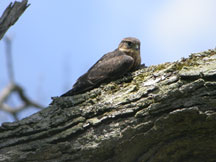
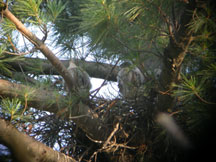
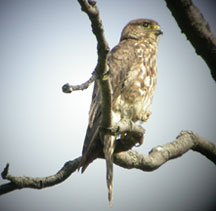
above photos by John Baumlin

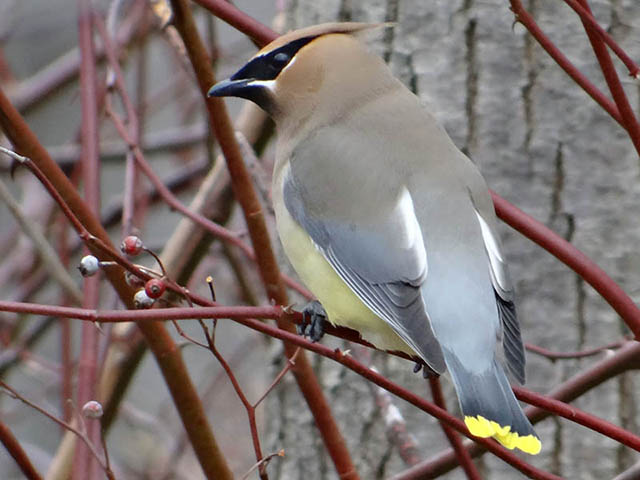
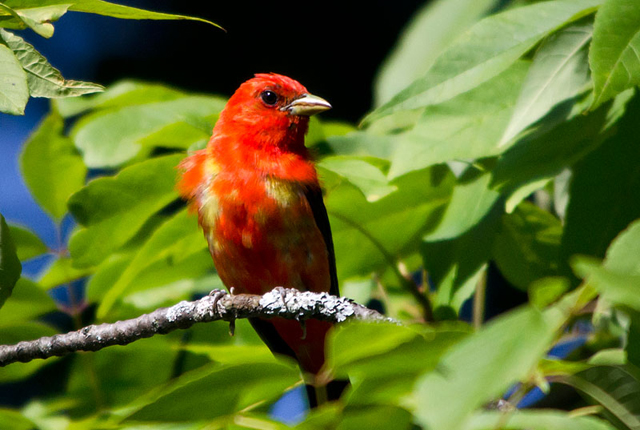
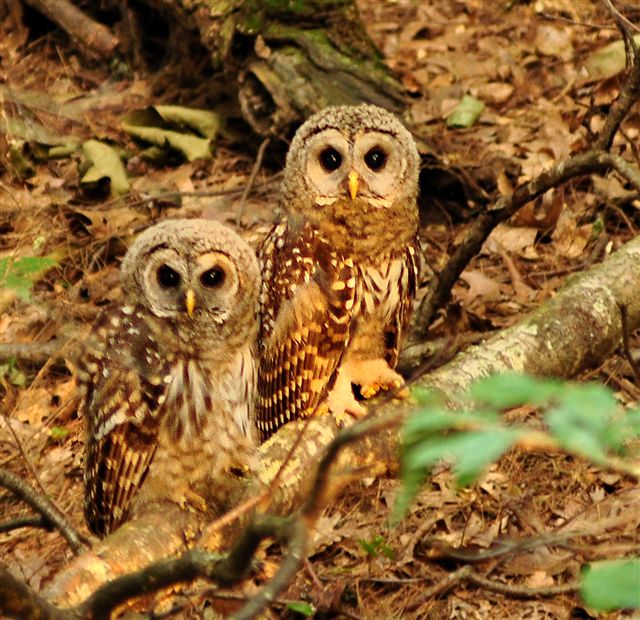
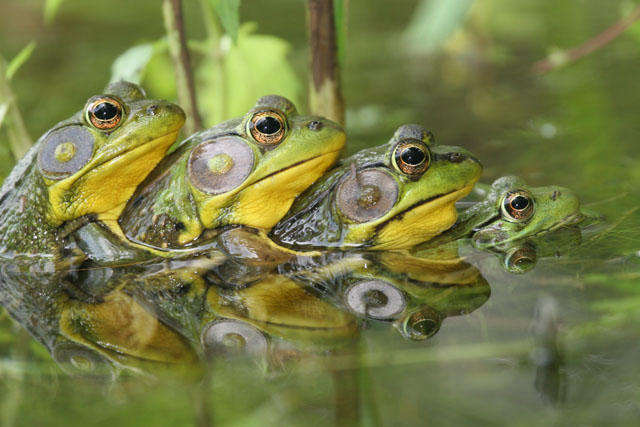
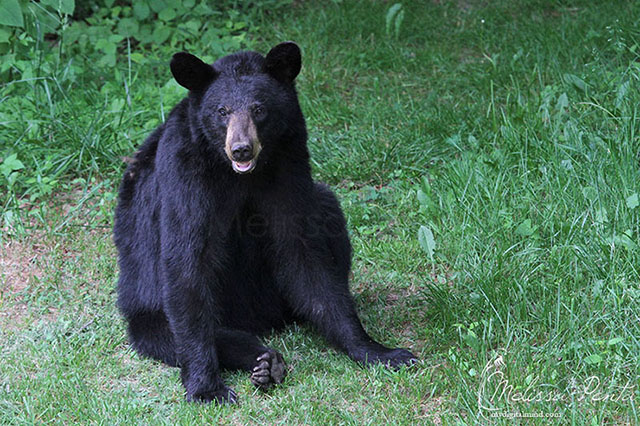
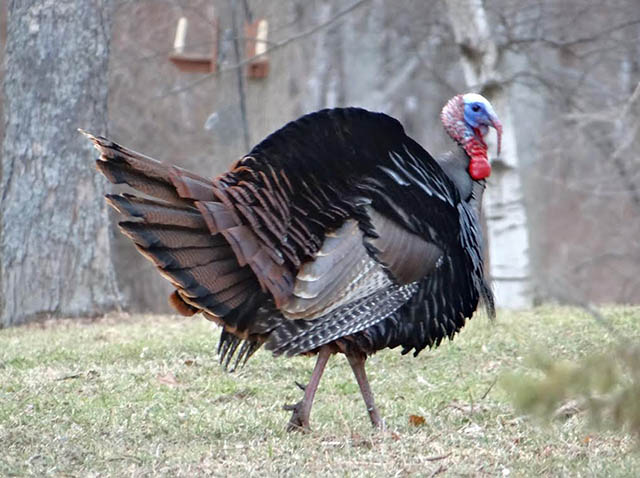
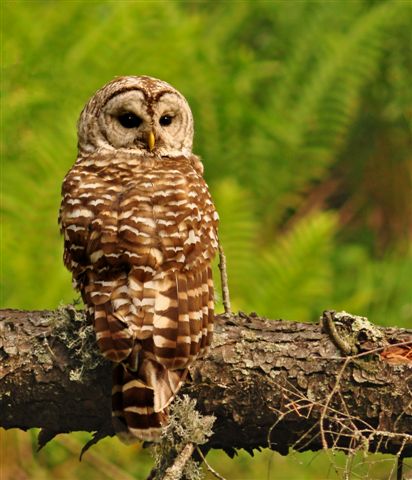
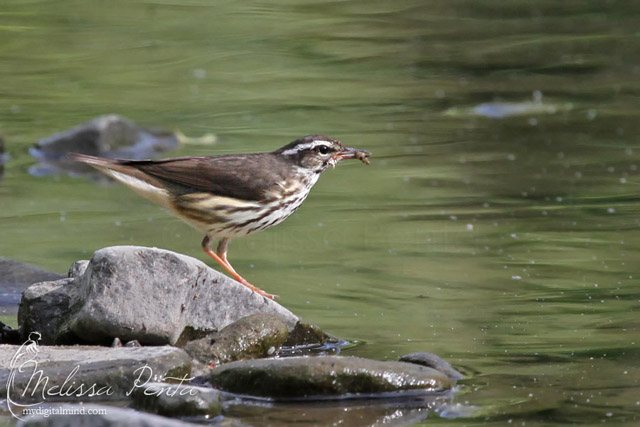
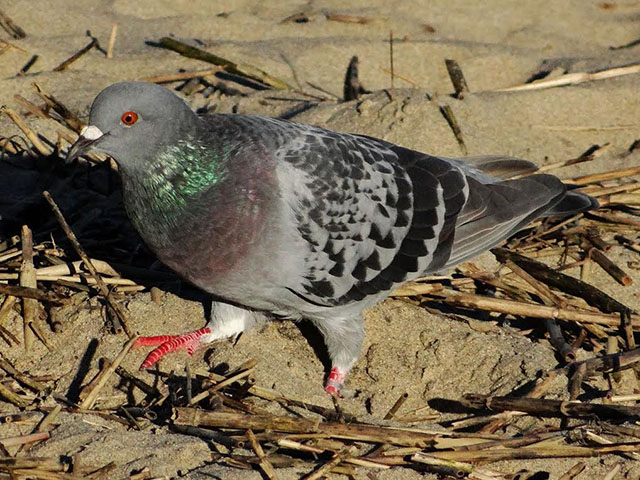
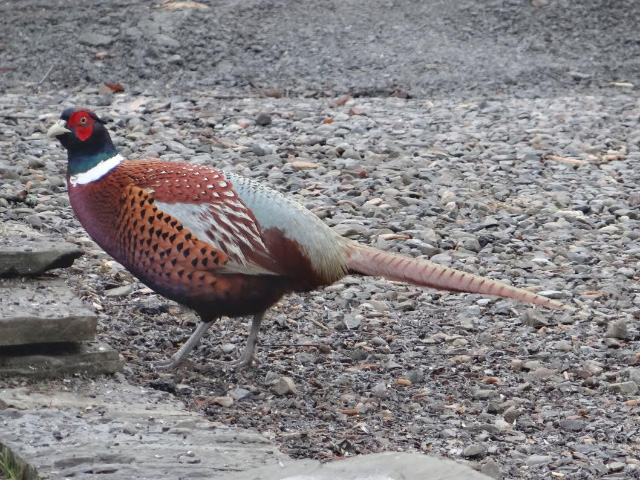

Comments are closed.